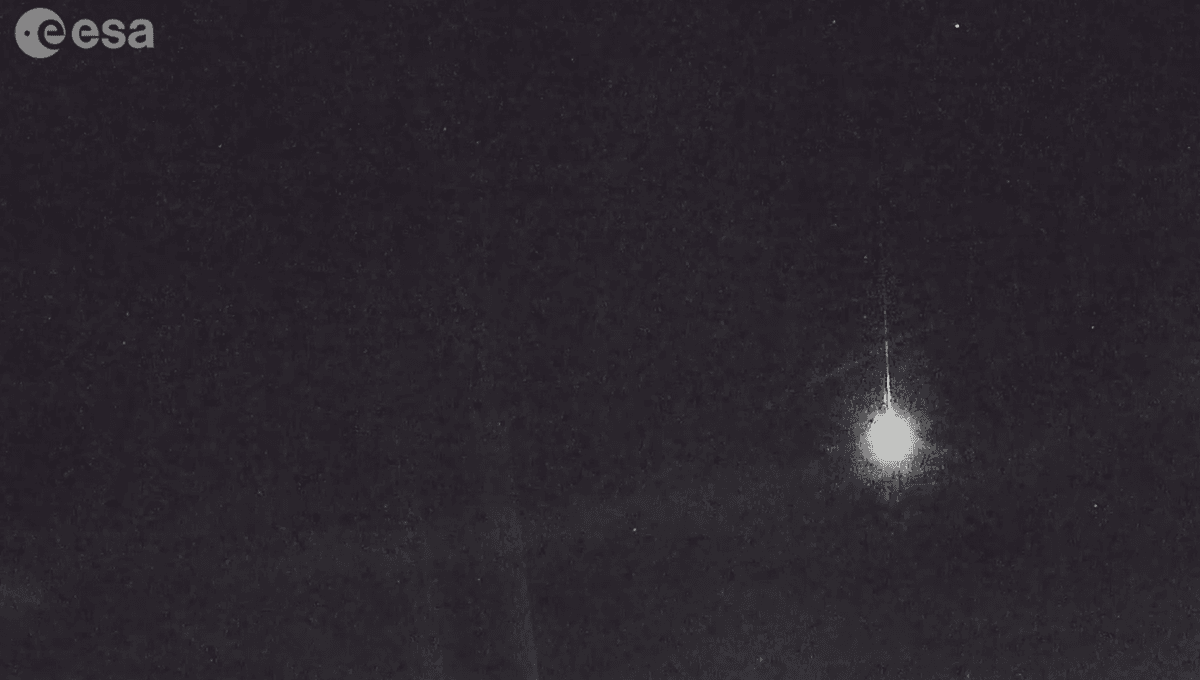
A piece of a comet decided to take a fatal dive into the Earth’s atmosphere, causing a bright flash and explosion tens of kilometers above the ground. The luminous celestial event passed across the Iberian Peninsula, flying over Portugal before exploding.
The rest of this article is behind a paywall. Please sign in or subscribe to access the full content.
The spectacular event took place on November 2, 2025, at 8:41 pm local time. A meteor detection station located in Casas de Millán, Cáceres, Spain, managed to record the whole event. The station is operated by the European Space Agency’s Planetary Defense Office, and it is part of the AllSky7 network.
According to analysis, the object entered the atmosphere at a steepish angle. It was first recorded at an altitude of 97 kilometers (60 miles) above the town of Lousã in central Portugal, and traveled for about 80 kilometers (50 miles) through the atmosphere. The space rock was moving at an estimated 81,000 kilometers (50,300 miles) per hour.
You can imagine that something that can fly from Earth to the Moon in just a handful of seconds might encounter some resistance from our atmosphere trying to keep that velocity. In fact, the rock quickly became incandescent, reaching a temperature of thousands of degrees Celsius before exploding at an altitude of 43 kilometers (26.7 miles).
There was another meteor in the general vicinity of this bolide about one hour before, but researchers believe this to be unrelated, as their trajectories were very different. Using the trajectory, the Southwestern Europe Meteor Network (SWEMN – IAA-CSIC) believes this bolide to be a cometary fragment that had the misfortune to cross our orbit when the Earth was actually there.
This is actually a good season for bolides. November 2 is the peak of the Southern Taurids, known for its bright meteors. So bright, in fact, that they have been dubbed the Halloween Fireballs. While the network has not commented on the source of the fireball, they shared a possible orbit for these fragments, and it does not match the orbit of the Taurids. It was probably another comet shedding pieces and throwing them at us. Rude, but spectacular.
Source Link: Watch: Cosmic Fireworks As Comet Fragment Traveling Over 80,000 Kilometers Per Hour Explodes In The Air